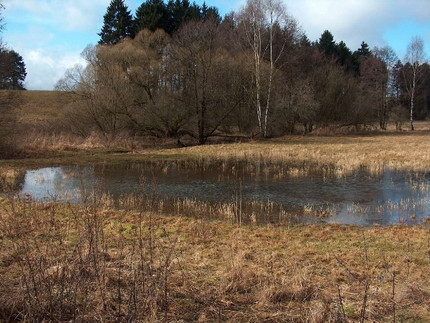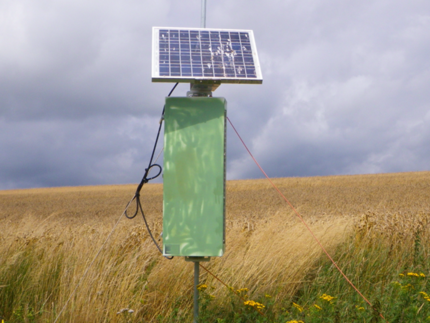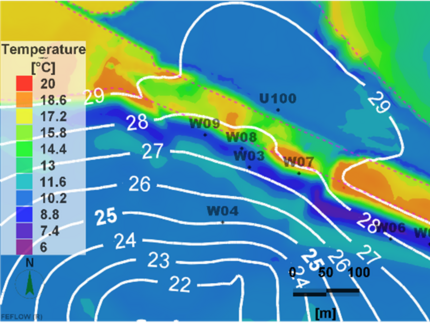Research topics
The focus of our research is on the estimation of soil moisture at landscape scale, the fate of microplastics in several environmental compartments and groundwater ressources with their quantity and quality being at risk due to climate change and environmental pollution.
- We develop and work with cosmic-ray neutron sensing (CRNS) to measure water content in cropped fields, meadows and forest, from field scale up to regional scale via roving applications. This investigation of soil water storage is linked to hydrological modelling, remote sensing and the estimation of groundwater recharge.
- Abundance of microplastics (MP) is investigated in rivers, riverbeds and groundwater as well as in soils, where we develop special non-invasive methods to detect and characterize microplastics. Furthermore, we study the processes of deposition of microplastics, translocation processes and their fate in presence of plant roots.
- Numerical simulations are applied to describe groundwater-surface water interaction and groundwater development, often combined with field measurements including occurence and degradation of micropollutants such as pharmaceuticals and personal care products (PPCP).
Cosmic neutrons for the determination of soil water content
Obtaining area average soil moisture for the root zone with Cosmic-ray neutron sensing (CRNS)
- Passive Neutron detectors
- Non-invasive installation
- Horizontal footprint 20ha
- Integration depth 40cm
ResearchUnit Cosmic Sense: Use and develop CRNS within an interdisciplinary team
- Massive Campaigns to map soil moisture distribution and dynamics at high resolution for small catchments
- Develop a Scanning Probe to obtain spatially resolved information on soil moisture distribution within the footprint
- Use CRNS soil moisture to estimate Groundwater Recharge and measure snow water equivalent to estimate the contribtion of snow melt in recharge
Fate of microplastics and non-invasive investigation of soil-plant interactions
We analyze the complex interaction of roots and soil using complementary 2D and 3D imaging approaches:
- Analysis of microplastic distribution by NIR-imaging in sediments and soils
- Neutron tomography
- root system, soil water distribution and root water uptake
- Combining Neutrons and X-rays
- Linking soil microstructure to rhizosphere hydraulics
- Combining neutron and fluorescence imaging
- Biogeochemical gradients (pH, oxygen, water content) influenced by plant root
Surface water - Groundwater Interactions
We aim to understand natural and human impacted systems and their temporal dynamics at the surface water - groundwater interface as well as in shallow aquifers:
- Representative groundwater sampling to access water level, temperature and solute concentrations
- Numerical modelling (e.g. Feflow, Modflow, HydroGeroSphere) to reproduce and evaluate natural and human impacted environments



